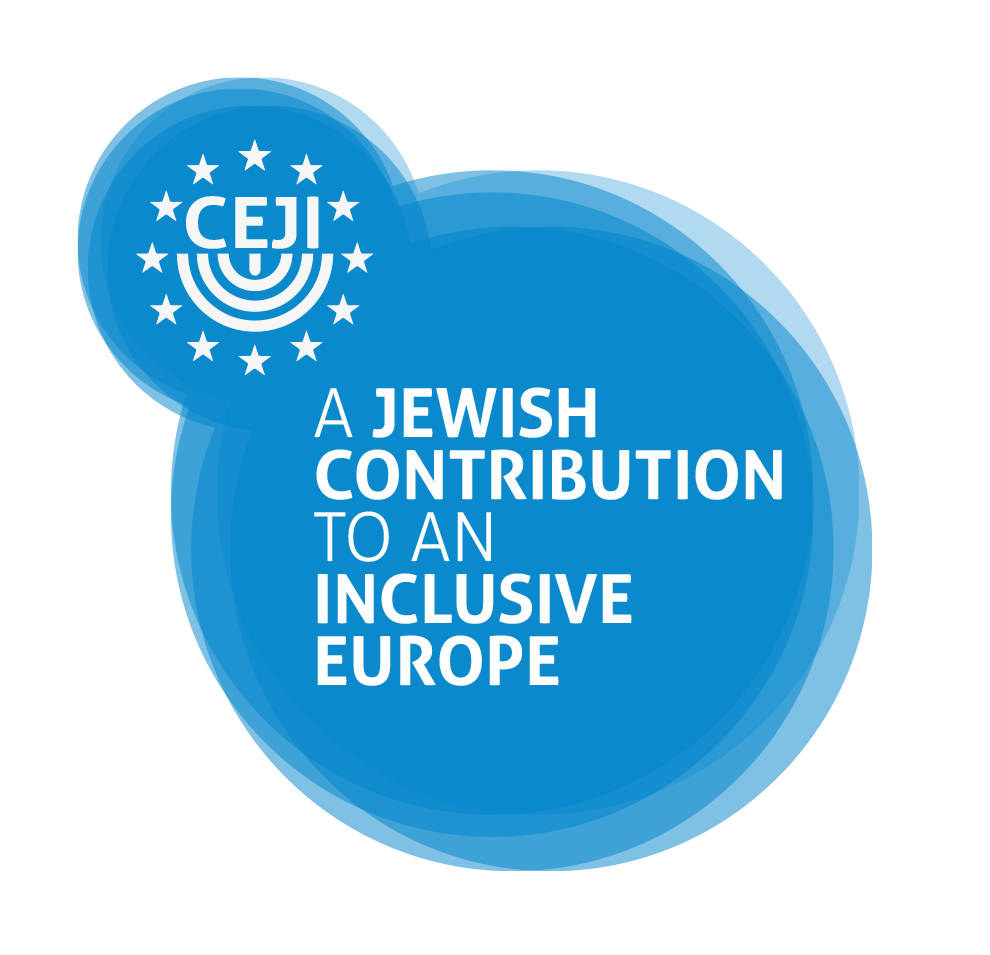CEJI Deep Dives: Invisible Others and Intersectional Equality Data
July 06, 2022
Camila Piastro, Intersectional Action Officer
Our world is written and recorded by and for, cis, straight, white, and able-bodied men. Our world is full of the silences of invisible experiences and missing pieces of information that have drastically shaped the way we see and live. When the experiences of racialised people are as underreported as they are, adequate resources cannot be allocated to address structural racism. Caroline Criado Perez emphasizes in her book, Invisible Women, that invisibility is not only about numbers. Disaggregated data has the power to reveal people’s experiences of discrimination, and particularly, how the lack of equality data has a real impact on the daily life of minorities and racialised people in Europe.
In light of the upcoming FRA survey on Jewish people’s experiences with antisemitism due in 2023, and in the context of a continent with different crises accentuating the existing inequalities, our job as civil society organisations (CSOs) is to keep bringing awareness on underreported issues which still dominate our societies, and particularly for us, the Jewish communities in Europe. Today, information about gendered experiences of antisemitism, discrimination against Jews of colour, cases of hate speech or hate crime against Jews from the LGBTQIA+ community, and Jews with disabilities are almost non-existent in Europe. The “invisible others” – racialised communities’ victims of intersectional discrimination – need to be visible and counted. For that, this article aims to shed light on the existing framework, and current challenges in equality data collection and Jewish communities in Europe, and bring awareness about how addressing these gaps could radically improve the policy-making process, assess effective implementation of national action plans against antisemitism, and support change agents in Europe addressing structural discrimination.
Even the collection of disaggregated data proves a challenge for researchers, policy-makers, and civil society organisations. In Europe, the collection of personal data disaggregated by personal characteristics – such as racial or ethnic origin – is protected by constitutional norms, EU data protection law, the EU Charter of Fundamental Rights, and the EU Anti-Racist Action Plan 2020-2025 which sets a crucial precedent on the guidelines for getting the ‘right data for informed policy choices’. However, many member states and actors continue misinterpreting the EU General Data Protection Regulation as strictly forbidding the collection of equality data based on racial and ethnic origin. Article 9 of the GDPR specifically comprises the premises in which the collection of data is allowed: a) when there is explicit consent by the subject to process the data, b) for reasons of public interest on the basis of EU or national law, and c) for archiving, scientific or historical research, and statistical purposes based on EU or national law.
It is under this framework of respect for key principles of data protection and fundamental rights that we need to foster the collection of equality data. Member states need to enhance collaboration between national statistical and data protection offices, to work closely to ensure GDPR requirements and national law, while addressing data gaps on racial and ethnic origins based on voluntary participation, anonymity, confidentiality, self-identification, and informed consent. However, major advancements will also require joint efforts to develop a mandatory provision on the data collection on the bases of ethnic and racial backgrounds in the framework of the EU Equality Directive, and the implementation of an infringement procedure when member states misinterpret GDPR as not allowing the collection of equality data.
In cases where the collection of equality data on the bases of ethnic and race origin following the principle of self-identification is not possible, the use of proxis should be considered. Proxis can be understood as variables that are not directly relevant but might serve to find information in close correlation with an unobserved variable. Country of origin, nationality, or skin colour are, for instance, variables often used to replace ethnical or racial origin. However, a country of origin, nationality, or skin colour cannot always give us information on whether a person identifies as Jewish or not. Therefore, the use of proxies might not fully grasp the categories of race or ethnic background, and consequently, the realities we need to assess. Nevertheless, the use of proxies is sometimes the only way to survey the reality of racialised minorities in Europe. In these cases, data collectors and reports need to be as transparent as possible, and the use of proxies should be publicly available.
According to the EU Strategy on Combating Antisemitism and Fostering Jewish Life, “equality data on Jewish people is relatively scarce due to the sensitivity of collecting data based on racial or ethnic origin, religion or belief, and because European Jews are rather a small group which leads to less available aggregated data from larger surveys”. Indeed, the collection of data on the Jewish population in Europe, as well as other racial and ethnic minorities remains a sensitive topic. Reports such as Young Jewish European: perceptions and experiences of antisemitism, and Discrimination and Hate crime against Jews in EU member states have remarkably increased the understanding of the experiences of antisemitism among the European Jewry and helped to advance advocacy efforts. We must use these surveys as benchmarks for further, deeper work in this area.
Data collected in the reports mentioned above appear disaggregated by age, Jewish attachment, national, European, and Israeli attachment, birthplaces, affiliation, religiosity, and level of education, among other aspects. Nevertheless, no major information is disaggregated on other protected grounds. Only some attention is given, in the second report, to overall discrimination experiences in which respondents were asked to consider their experiences of discrimination in the past 12 months on the grounds of, skin colour, gender, sexual orientation, age, religion, belief, disability, or gender identity. Respondents were also asked if these experiences were related to the fact of being Jewish. To that, 39% of respondents answered that they had felt discriminated against on one or more of the grounds mentioned above. 29% cited two grounds of discrimination, and 23% three or more grounds of discrimination, which might indicate that people were discriminated against based on several grounds at the same time (intersectional discrimination) or that people experienced discrimination on separate grounds on different occasions (additive discrimination). Whatever the case may be, more attention should be given to this 39%.
The absence of greater analysis of disaggregated data by gender, ethnic, and diaspora background, disability, and sexual orientation is a challenge for the community and policymakers to assess the scale of intersectional forms of antisemitism and discrimination. Without this information, we might be missing the necessary data to fully understand how antisemitism and discrimination manifest in our societies. There is a lack of nonstandard language which contributes to the challenge of addressing intersectionality and Jewish communities in Europe. How do we conceptualise notions, such as Jews of colour in the European context? What are the different diaspora backgrounds that should be included in equality data and how? the answer to these questions will deeply condition our capacity to address the impact of ashkenormativity on the stereotypical perception of Jews that feeds antisemitic narratives, and the impact it has on the experience of Jews of colour within and outside the Jewish world. More standardised language exists in regards to sexual orientation, gender, and disability, yet these areas also deserve similar interrogations in relation to Jewish identity. In that regard, future research and data collected on the Jewish population needs to develop a consistent language to disseminate a uniform approach including questions for the self-identified race, perceived race, geographic origins, and diaspora background, to gather comprehensive information on the experiences of Jews of colour, and diaspora backgrounds in addition to other protected grounds.
In a world where the promotion of an intersectional EU framework is crucial to address discrimination and foster equality, more focus is needed on the different realities faced by Europe’s Jewish population. We need to train communities, stakeholders, and authorities to identify, report, collect, and analyse intersectional discrimination and antisemitism. Equality data collected by surveys such as the FRA on experiences of antisemitism should provide a wider overview of intersectional experiences of discrimination in ways that do not undercount the diversity of the Jewish people in Europe. Because our diversity as a community is our strength, only if we embrace it and ensure equal treatment for all.



